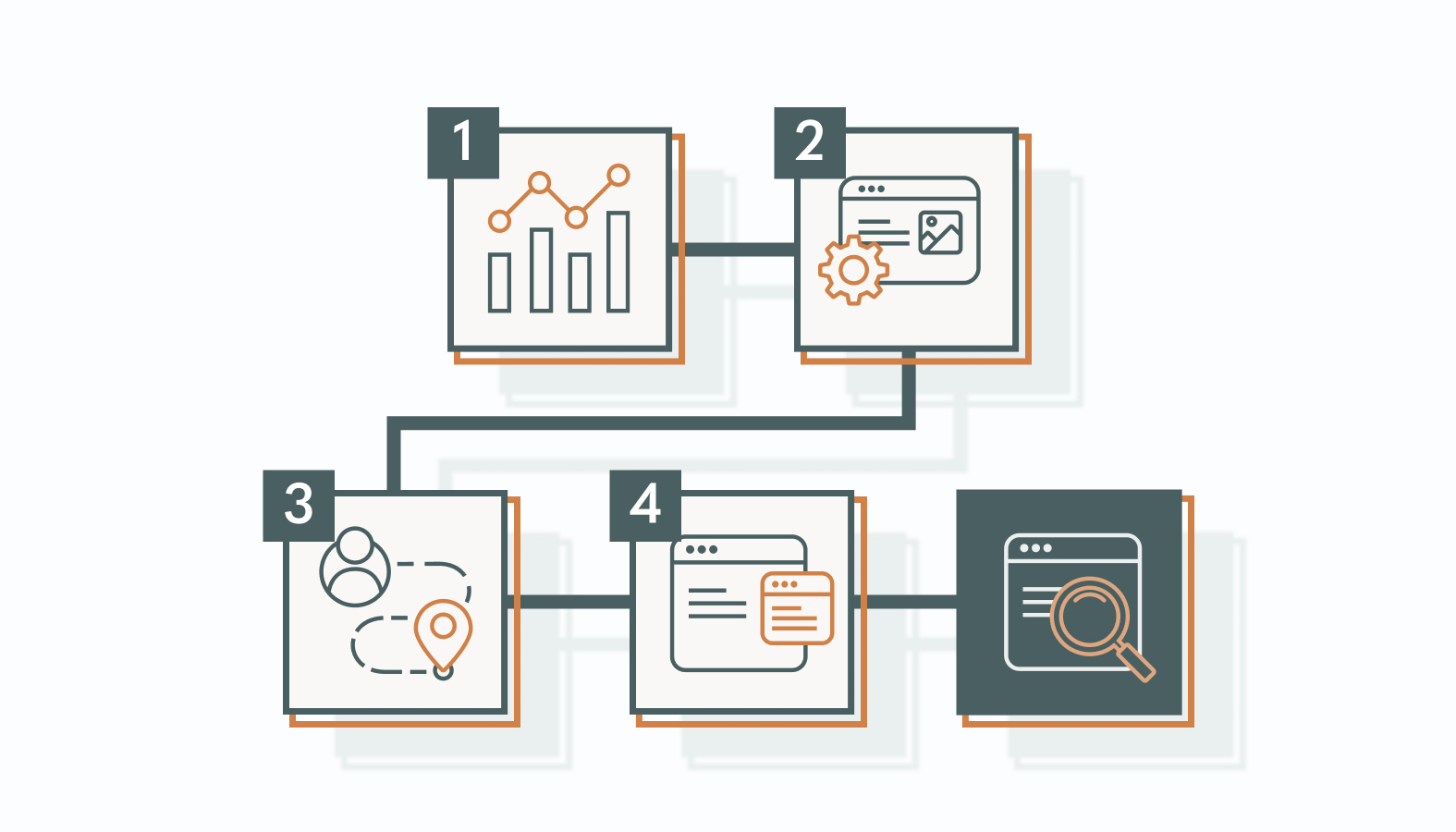Every business wants more visibility, better rankings, and stronger results online. The issue is knowing how to get there. Without clear insights, marketing efforts often feel scattered and reactive. SEO analytics changes that by turning raw data into actionable intelligence.
The challenge many organizations face is translating numbers into strategy. Traffic spikes, keyword rankings, and bounce rates: these metrics matter only if you can connect them back to user behavior and business goals.
That’s where SEO analytics shows its true value: aligning marketing activity with measurable outcomes.
When analytics becomes part of everyday decision-making, your digital strategy stops relying on hunches and starts running on facts. Let’s dive into how you can make that shift and turn data into lasting ROI.
The Role of SEO Analytics in Digital Marketing
In the fast-moving world of digital marketing, SEO analytics gives businesses a clear view of what’s working, what’s not, and how to make campaigns smarter. With precise data, marketers can fine-tune strategies, optimize performance, and see measurable ROI improvements.
How SEO Analytics Uncovers Actionable Insights
SEO analytics tracks a wide range of data, each offering clues about user behavior and preferences. Keyword performance, traffic patterns, heatmaps, and bounce rates all reveal what grabs attention and where users lose interest.
Imagine a retail brand spotting a trend: shoppers were searching for a particular product feature. By highlighting that feature in content and offerings, the company met demand and gained a tangible advantage. Insights like this turn raw data into a competitive strategy.
Using SEO Analytics to Maximize ROI with Data-Driven Decisions
SEO analytics guides spending and strategy by showing which efforts drive results. Metrics such as conversion rates and acquisition costs reveal the channels and tactics that perform best.
A B2B company analyzed high-performing keywords and adjusted its content strategy. Organic traffic climbed, acquisition costs fell, and ROI jumped 20%. That demonstrates the impact of letting data direct decisions instead of relying on assumptions.
SEO analytics illuminates audience behavior while making marketing smarter, more targeted, and profitable.
Core Components of SEO Analytics Every Business Should Track
To effectively harness SEO analytics, businesses must understand the principles that make data actionable. Accurate metrics alone don’t improve performance; insights from traffic patterns, engagement, and rankings guide smarter marketing decisions and tangible growth.
A complete picture of SEO performance comes from multiple components, each revealing unique opportunities. Examining these systematically helps businesses design strategies that are both precise and scalable, covering visibility, authority, and user experience.
How to Analyze Website Traffic and Visitor Behavior
Website traffic analysis is central to understanding audience behavior. Tools like Google Analytics detail visitor sources, page popularity, session duration, and navigation patterns. These insights allow marketers to optimize content, refine site structure, and enhance user experience.
Traffic analysis also informs broader strategy. High-traffic pages highlight popular topics, signaling areas for additional content, cross-linking, or targeted campaigns. Identifying underperforming pages shows where to reduce friction and improve engagement.
Tracking Keyword Rankings and Measuring Search Visibility
Keyword tracking shapes search visibility. Platforms like SEMrush and Ahrefs reveal which terms drive traffic and where new opportunities exist.
Continuous monitoring allows marketers to optimize existing content, target emerging keywords, adjust metadata, and refine internal linking, ensuring sustained rankings and audience reach.
Monitoring On-Page and Technical SEO Metrics That Matter
Page speed, mobile-friendliness, structured data, and metadata all influence search performance.
Regular audits identify broken links, duplicate content, or missing alt tags, ensuring both search engines and users get a seamless experience.
Evaluating Backlink Quality to Strengthen Authority
Backlinks remain a key ranking factor. Moz, Ahrefs, and similar tools assess link quality, relevance, and authority.
Proactive strategies include guest posts, shareable content, and influencer outreach, boosting credibility, referral traffic, and domain authority.
Measuring User Engagement and Conversion Rates for Growth
Engagement metrics like bounce rates, scroll depth, and session duration provide insight into content effectiveness. High engagement often drives conversions, making monitoring essential.
Optimizing conversions requires clear calls-to-action, intuitive navigation, personalized experiences, and ongoing A/B testing. Tracking these metrics ensures visitors become customers and campaigns deliver measurable ROI.
Mastering these SEO analytics components equips businesses to interpret data strategically, improve performance across channels, and secure long-term growth.
Setting Up SEO Analytics the Right Way
A structured setup process lays the foundation for reliable SEO analytics. Accurate data collection ensures insights are actionable, giving businesses a clear path for informed decisions and strategic planning.
1) Choose the Best SEO Analytics Tools for Your Business
Selecting the right tools aligns analytics with business objectives. When evaluating options, focus on:
- Scalability – Can the tool grow with your business?
- Ease of use – Will your team adopt it quickly?
- Integration – Does it connect with your CMS, CRM, or marketing stack?
- Cost-effectiveness – Does the ROI justify the investment?
Popular tools and their strengths:
- Google Analytics – Comprehensive traffic and behavior data
- SEMrush – Advanced keyword and competitor insights
- Ahrefs – Backlink analysis and content evaluation
- Moz – Robust SEO tracking and site audits
Choose a tool that fits your goals, not the one everyone else is using.
2) Implement and Configure Tracking Codes Correctly
Tracking codes are the backbone of SEO analytics, capturing every click, pageview, and conversion that happens on your site. Without proper implementation, even the best analytics tools can produce incomplete or misleading data.
To ensure accuracy and reliability:
- Place codes in your site’s header – This ensures the tracking code loads on every page before content renders, capturing all user interactions without missing a beat.
- Use a tag management system like Google Tag Manager – Streamline deployment, manage multiple tags in one place, and reduce the risk of errors or slow page loads.
- Audit regularly for issues – Check for duplicate tags, missing codes, or misconfigured events to prevent gaps in data collection and ensure reports reflect actual user behavior.
- Test tracking after deployment – Verify that all events, goals, and conversions are firing correctly using tools like Google Tag Assistant or real-time analytics views.
- Document your setup – Maintain a record of all tags, triggers, and tracking rules so teams can troubleshoot quickly and make adjustments without guesswork.
Properly implemented tracking codes turn raw site activity into reliable data, giving you a clear, accurate picture of user behavior and campaign performance.
3) Design Goal Tracking and Optimize Conversion Pathways
Goal tracking is essential for measuring the success of SEO campaigns. Common goals include form submissions, purchases, newsletter sign-ups, or any action that signals engagement or conversion.
To optimize results and improve user experience:
- Map the user journey. Identify potential drop-off points where visitors lose interest or abandon the site.
- Simplify navigation. Make it easy for users to find what they need without friction.
- Enhance page load speeds. Fast-loading pages reduce bounce rates and keep visitors engaged.
- Craft clear, compelling calls-to-action. Guide users toward desired actions with persuasive, intuitive prompts.
- Test variations. Run A/B tests on layouts, messaging, and CTAs to refine pathways and maximize conversions.
Implementing goal tracking alongside these optimization strategies ensures every interaction is measured, every opportunity is acted on, and SEO campaigns drive tangible business results.
4) Create Custom Dashboards for Clear, Instant Insights
Custom dashboards give a real-time snapshot of SEO performance, making complex data instantly understandable. They can be tailored to highlight the metrics that matter most to your business, such as traffic sources, conversion rates, and keyword rankings.
Best practices for designing dashboards include:
- Display the most relevant metrics. Focus on what drives decisions and aligns with business goals.
- Use graphs and charts. Present data visually for fast, intuitive understanding.
- Keep dashboards clear, functional, and actionable. Ensure teams can quickly interpret insights and act on them.
When dashboards are well-designed, they streamline decision-making, keep teams aligned, and provide a reliable view of campaign performance.
Coupled with a structured SEO analytics setup, they turn raw data into actionable insights, giving businesses the confidence to make decisions that genuinely move the needle.
Top SEO Analytics Tools to Drive Performance
In the fast-paced world of digital marketing, employing the right SEO analytics tools is vital for gaining a competitive advantage and optimizing performance. These tools provide invaluable insights into traffic, user behavior, keyword success, and backlink quality, forming the foundation of successful SEO strategies.
Google Analytics: Tracking Traffic and User Behavior
Who it’s for: Businesses of all sizes seeking in-depth insights into visitor behavior and site performance.
Google Analytics provides a detailed view of website traffic and user interactions, from page views to session duration and bounce rates. Advanced features like custom reports, segments, and event tracking let marketers analyze specific audience behavior and interactions.
- Pros: Free version available; powerful reporting; customizable segments and events
- Cons: Steep learning curve; some features only in GA4; can be overwhelming for beginners
- Cost: Free; GA360 enterprise version starts around $150K/year
Google Search Console: Monitoring and Improving Search Visibility
Who it’s for: Any business that wants to monitor search visibility and maintain technical SEO health
Google Search Console is a must-have for tracking your site’s performance in Google Search. It provides data on search queries, click-through rates, and indexing status, helping you spot and fix issues that could hurt visibility. Key tools include:
- Performance Report – Shows which queries bring users to your site.
- Coverage Report – Highlights indexing issues, such as crawl errors or mobile usability problems.
Regularly reviewing these reports ensures your site remains search-friendly and visible to the right audience.
- Pros: Free; direct insights from Google; alerts for indexing and mobile issues
- Cons: Limited data compared to paid tools; mainly focused on search
SEMrush: Keyword and Competitor Analysis Made Simple
Who it’s for: SMBs and agencies needing keyword tracking, competitive research, and campaign optimization
SEMrush is a powerful tool for keyword research and competitor intelligence. It helps marketers track rankings, identify high-performing keywords, uncover content gaps, and monitor competitors’ strategies.
By analyzing traffic sources, backlink profiles, and keyword performance, businesses can spot opportunities, address threats, and refine their SEO strategy to maintain a competitive edge.
- Pros: Comprehensive SEO toolkit; strong competitor insights; integrates with PPC and social tools
- Cons: Can get expensive; some features may be overkill for small sites
- Cost: Starts at $129.95/month
Ahrefs: Backlink Tracking and Content Performance Insights
Who it’s for: Businesses and agencies focused on link-building, content marketing, and authority growth
Ahrefs is renowned for its detailed backlink analysis and content evaluation. It provides a full overview of a site’s backlink profile, including referring domains, link quality, and domain authority. Its content analysis tools identify top-performing content, helping marketers create material that attracts links and shares, ultimately boosting site authority and visibility.
By monitoring competitors’ link profiles, businesses can strengthen link-building strategies and stay ahead in their niche.
- Pros: Best-in-class backlink analysis; strong content insights; reliable competitor data
- Cons: Expensive for small businesses; learning curve for advanced features
- Cost: Starts at $119/month
These SEO analytics tools equip marketers with actionable insights to optimize strategies, increase visibility, and maintain a competitive edge in an increasingly data-driven digital landscape.
Putting SEO Analytics into Practice
Embedding SEO analytics into daily marketing operations transforms data from a static report into a strategic engine. When analytics drives every move, decisions are smarter, campaigns are sharper, and business objectives are easier to hit.
Defining Clear SEO Goals and Key Performance Indicators
Start by outlining objectives that matter: boosting organic traffic, improving conversion rates, or raising brand visibility. Once goals are clear, select KPIs to measure progress, such as:
- Conversion rate, average session duration, or bounce rate for engagement
- Keyword ranking improvements for search visibility
- Referral traffic from backlinks for authority growth
Clear objectives and KPIs focus efforts, provide measurable benchmarks, and give teams a framework for agile, data-driven adjustments.
Setting Up Analytics Platforms for Accurate Tracking
Proper configuration ensures data is precise and insights are actionable. Steps include:
- Select the Right Tools: Align your platform with business needs. Use Google Analytics, SEMrush, or Ahrefs, depending on focus.
- Install Tracking Codes: Add codes to your site’s header to capture every visit and interaction.
- Configure Goals: Track conversions, form submissions, or other critical actions.
- Segment Your Audience: Analyze different groups to tailor strategies for maximum impact.
- Audit Regularly: Identify and prevent misfires, such as missing tags or duplicate codes, to ensure accurate data.
Using tag management systems like Google Tag Manager and periodic reviews ensures data quality and keeps reports trustworthy.
Training Teams to Use SEO Analytics Effectively
Data is only as valuable as the people interpreting it. A team skilled in SEO analytics transforms numbers into strategy, fostering a culture where insights drive every decision. Build this capability by:
- Conducting Workshops: Train your team on analytics tools and data interpretation techniques.
- Encouraging Engagement: Have team members interact regularly with dashboards and reports.
- Promoting Open Discussions: Share insights, brainstorm solutions, and refine strategies collaboratively.
- Setting Expectations: Make data-driven decision-making a standard part of the workflow.
- Recognizing Success: Celebrate team members who apply analytics effectively to achieve measurable results.
Empowering teams this way ensures analytics becomes integral to your marketing strategy, driving smarter campaigns, better outcomes, and sustained growth.
Using SEO Analytics to Strengthen Strategy
SEO analytics transforms raw data into actionable insights, arming your strategy with agility and a competitive edge. Properly used, it keeps your business ahead of the curve in a constantly shifting digital landscape.
Aligning SEO Strategies with Business Goals
Your SEO efforts should directly fuel what your business actually cares about. To achieve alignment:
- Define Core Objectives: Increase market share, boost engagement, or improve profitability.
- Map SEO Goals to Business Outcomes: Examples include improving search visibility for high-value products or increasing conversions in priority segments.
- Review and Adjust Regularly: SEO isn’t static. Reassess goals and tactics as business priorities shift to ensure every effort drives measurable impact.
Refining Marketing Tactics Through Ongoing Data Analysis
Analytics is only powerful when it sparks action. Use continuous monitoring to:
- Spot performance trends and weaknesses.
- Identify underperforming content, pages, or campaigns.
- Take corrective action such as refreshing content, optimizing metadata, or launching targeted link-building initiatives.
Iterative refinement keeps strategies sharp and responsive in a fast-moving digital landscape.
Uncover Opportunities and Address SEO Challenges
SEO analytics highlights where growth is waiting and where trouble lurks.
Leverage it to:
- Find Emerging Opportunities: Track search trends and competitor activity to target new market segments or trending topics.
- Identify and Mitigate Risks: Monitor declining keyword rankings, negative feedback, or technical issues, and act swiftly with page optimizations or UX improvements.
The point is to collect data and translate it into a strategy that actually moves the needle. Using SEO analytics this way ensures your efforts:
- Stay aligned with business objectives
- Continuously evolve with the market
- Capitalize on opportunities while mitigating threats
When you treat analytics as a strategic asset, your SEO strategy is proactive, agile, and built for sustained competitive advantage.
Make Analytics Your Strategic Edge
SEO analytics commands every smart marketing move. By revealing exactly how users interact with your site, which content drives conversions, and where competitors are gaining ground, it transforms raw numbers into strategic action.
Used effectively, analytics aligns your SEO efforts with core business objectives, fine-tunes campaigns through ongoing insights, and uncovers growth opportunities while neutralizing potential risks. The outcome is an agile, data-driven strategy that reacts to market shifts with precision and anticipates the next move.
Embed these practices into daily operations. Equip your team to act decisively on insights, refine strategies continuously, and maximize every marketing dollar. When analytics shapes your decisions, your business navigates the digital landscape with authority and drives measurable dominance.
Prefer expert guidance? Consult with our SEO team to turn your data into an actionable strategy and accelerate results.










